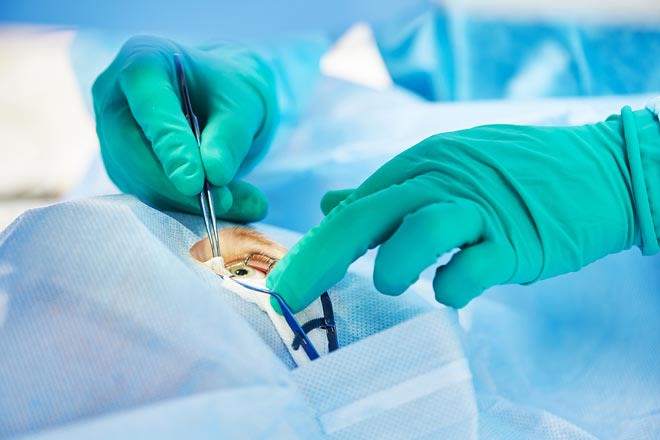The Comprehensive Eye Exam: What to Anticipate Throughout Your Visit to the Eye Physician
A see to the eye medical professional for a thorough eye exam is greater than a routine check-up; it is a vital action in safeguarding your visual health. From the first discussion of your case history to the precision of the visual acuity test, each part of the exam serves a particular function. What specifically occurs throughout the eye wellness assessment, and how does it affect the prescription procedure? Understanding these elements is necessary for those that desire to keep optimum sight. As we explore each part, the value of follow-up referrals will certainly likewise become clear.
Initial Assessment
The initial assessment during an eye test acts as a critical foundation for understanding a person's visual wellness requirements. This phase sets the tone for the whole assessment process, allowing the optometrist to gather vital information concerning the client's clinical history, way of life, and certain vision issues. By thoroughly assessing any type of pre-existing conditions, medications, or previous surgical procedures, the eye care specialist can customize the evaluation to attend to individual demands effectively.

Furthermore, the initial appointment is an opportunity for clients to voice any concerns or inquiries, cultivating a joint connection with their doctor. This communication not just makes certain that the patient feels informed and comfortable but additionally encourages them to take part actively in their eye health monitoring. Jointly, these discussions allow the optometrist to devise an individualized examination plan, making sure optimum treatment and precise medical diagnosis.
Aesthetic Skill Examination
Starting the core parts of an eye examination, the visual skill test is designed to assess the intensity and clearness of a client's vision. This essential analysis aids determine exactly how well a person can determine letters or icons at a standard range, typically making use of a Snellen chart (Optometrist Riverside). The graph makes up rows of letters that decrease in dimension inside out, with the individual placed at a popular range of 20 feet
Throughout the examination, the client is asked to cover one eye and review out loud the smallest line of letters they can see clearly. This process is duplicated for the other eye. The outcomes are tape-recorded as a portion, with 20/20 vision showing regular aesthetic acuity-- where the patient can see at 20 feet what an individual with typical vision can see at that range.
The aesthetic acuity examination likewise determines prospective refractive errors such as myopia, astigmatism, or hyperopia, which may require rehabilitative lenses. By developing a standard of aesthetic efficiency, the examination is a crucial analysis device that helps the eye treatment specialist in creating a suitable treatment strategy customized to the person's unique aesthetic needs.
Eye Health Assessment
Complying with the visual acuity test, a detailed eye wellness analysis is conducted to guarantee the general wellness of the eyes. This essential segment of the eye examination entails a complete analysis of both the exterior and internal frameworks of the eye. The ophthalmologist or optometrist starts by examining the eyelids, cornea, conjunctiva, and sclera for any indicators of infection, swelling, or problems. Utilizing customized equipment like a slit lamp, the practitioner gains a magnified sight of the eye's composition, allowing comprehensive evaluation.
Next, attention shifts to the internal frameworks. Through making use of ophthalmoscopy or fundus photography, the retina, optic nerve, and capillary are diligently reviewed. This action is essential for determining conditions such as retinal detachment, glaucoma, or diabetic retinopathy. In many instances, pupil extension is done to improve see this visibility of the inner eye structures, although this might result in temporary light level of sensitivity for the client.
Additionally, intraocular pressure is gauged to screen for glaucoma threat. This is commonly done utilizing tonometry, which can identify elevated stress levels that might suggest prospective damage to the optic nerve. Collectively, these assessments develop a detailed evaluation to keep eye health and wellness.
Refraction and Prescription
Refraction is an innovative procedure carried out by eye care specialists to determine the specific lens power required to fix refractive mistakes such as myopia, hyperopia, presbyopia, and astigmatism. The objective of this treatment is to examine exactly how light bends as it passes through the eye, enabling the specialist to determine whether rehabilitative lenses are essential for boosted aesthetic acuity.
Throughout the refraction process, the client is asked to look through a phoropter, a device which contains different lenses. The specialist will methodically transform these lenses and ask the person to compare clearness in between choices until the very best possible vision is accomplished. This procedure is vital in crafting an exact prescription that defines the suitable lens power for eyeglasses or call lenses.
The prescription obtained from this treatment not just maximizes vision yet likewise acts as a foundation for choosing suitable restorative glasses. It is vital to make sure that prescriptions are frequently upgraded, as adjustments in vision can happen with time, highlighting the relevance of regular eye evaluations. This careful focus to detail aids maintain clear, comfortable vision in life.
Follow-Up Recommendations

Throughout a follow-up browse through, the eye doctor will conduct a collection of tests to evaluate visual acuity and check for any type of modifications in vision that could necessitate an update to the prescription. In addition, the follow-up offers a chance to go over official statement any type of discomfort or concerns experienced with present eyeglasses. Adjustments can be made to ensure comfort and efficacy, whether via lens alteration or framework changes.
For people with recurring problems such as glaucoma, diabetes-related eye issues, or macular degeneration, even more frequent follow-ups might be needed. These appointments are important for managing and possibly reducing the development of eye disease. Following these recommendations can considerably contribute to maintaining aesthetic health and avoiding long-term problems.
Final Thought
The thorough eye exam is an essential process for preserving aesthetic health and wellness, including an in-depth assessment of medical history and vision problems. Trick parts include the visual acuity test, which evaluates eyesight quality, and the eye health evaluation, which examines the general condition of the eyes.
A browse through to the eye doctor for a detailed eye test click here for more info is even more than a routine examination; it is a vital step in protecting your visual health.Kicking off the core components of an eye examination, the visual skill examination is made to analyze the intensity and quality of a client's vision.Complying with the aesthetic acuity examination, an extensive eye health evaluation is performed to make certain the general health of the eyes. These sees permit the eye treatment specialist to monitor adjustments in vision, update prescriptions, and assess the overall health of the eyes. Key components include the visual acuity examination, which evaluates eyesight clarity, and the eye wellness analysis, which checks out the total condition of the eyes.